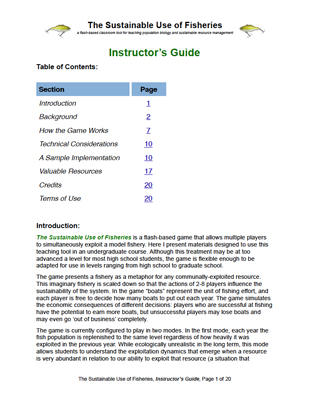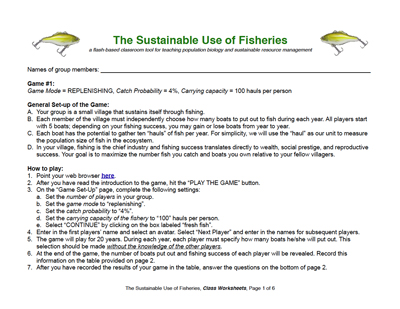

a flash-based classroom tool for teaching population biology and sustainable resource management
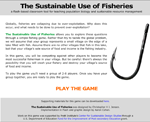
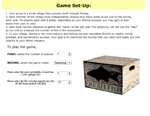
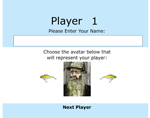
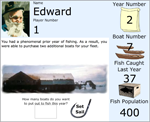

The Sustainable Use of Fisheries is a flash-based game that allows multiple players to simultaneously exploit a model fishery. The game can be played by anyone for free, and is flexible enough to be adapted for use in levels ranging from high school to graduate school.
Students act as fishers sharing a fishery, and must make decisions about how to exploit their common resource. Players have the potential to over-exploit or under-exploit their fishery, both of which can cause their fishing village to fail. Playing the game allows students to discover the "Tragedy of the Commons" first hand, and to experiment with different approaches to regulating a limited resource. The game empowers students to answer questions about population growth, predation, cooperation, and sustainable exploitation through an inquiry-based process.
The game presents a fishery as a metaphor for any communally-exploited resource. This imaginary fishery is scaled down so that the actions of 2-8 players influence the sustainability of the system. In the game "boats" represent the unit of fishing effort, and each player is free to decide how many boats to put out each year. The game simulates the economic consequences of different decisions: players who are successful at fishing have the potential to earn more boats, but unsuccessful players may lose boats and may even go "out of business" completely.
The game is currently configured to play in two modes. In the first mode, each year the fish population is replenished to the same level regardless of how heavily it was exploited in the previous year. While ecologically unrealistic in the long term, this mode allows students to understand the exploitation dynamics that emerge when a resource is very abundant in relation to our ability to exploit that resource (a situation that resembles early human exploitation of ecosystem services). In the second mode, the growth of the fish population is realistically dynamic: the population in the current year is dictated by the fecundity of the species and the population surviving the previous year's fishing effort. In this mode, the fishery can crash and even go extinct.
You can also play or download The Sustainable Use of Fisheries game on the SustFish dedicated page. If you wish to embed this game on your own site or into a learning management system, you can download this folder.
Click on the images below to download a complete Instructor's Guide and ready-to-use classroom worksheets:
|
Instructor's Guide |
Classroom Worksheets |

